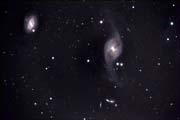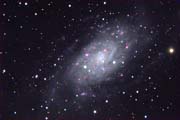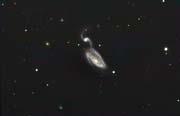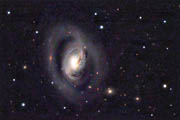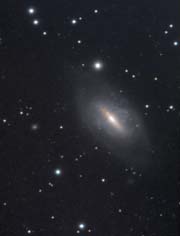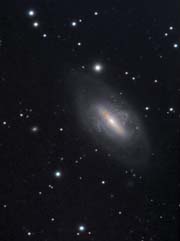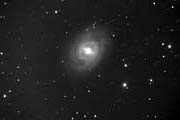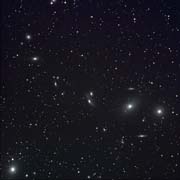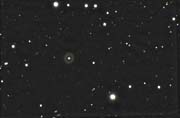|
Before capturing the extra data for ARP 84 on 12th
February 2008 I decided to add M96 to my Messier images -
I'd never imaged it before, it looking rather uninteresting
on my wall chart which doesn't show the outer clouds. But
after seeing Adam Block's superb APOD
image I decided it was definitely worth a go.
Interestingly the Isaac
Newton Telescope image doesn't hold a candle to Adam's.
But to be fair it was taken in 1995!
Well, even with 2+ hours luminance it's clear that I need
darker, more contrasty skies than I'm ever likely to get
without a temperature inversion covering all the local area
light pollution, and leaving me in the clear at my 680 ft.
altitude. But I guess it'll do!
Note: Further
processing in 2025(!) improved the galaxy contrast and
better showed the outer star clouds.
SBIG ST-8XME, 12" LX200 ACF at f10, Luminance 1 x 8 min +
12 x 10 mins (I possibly could have gone longer, but was
avoiding blooming), RGB each 8 x 3 mins binned 2x2, Astrodon
filters. Slightly rotated to acquire a guide star. Full
size
|
